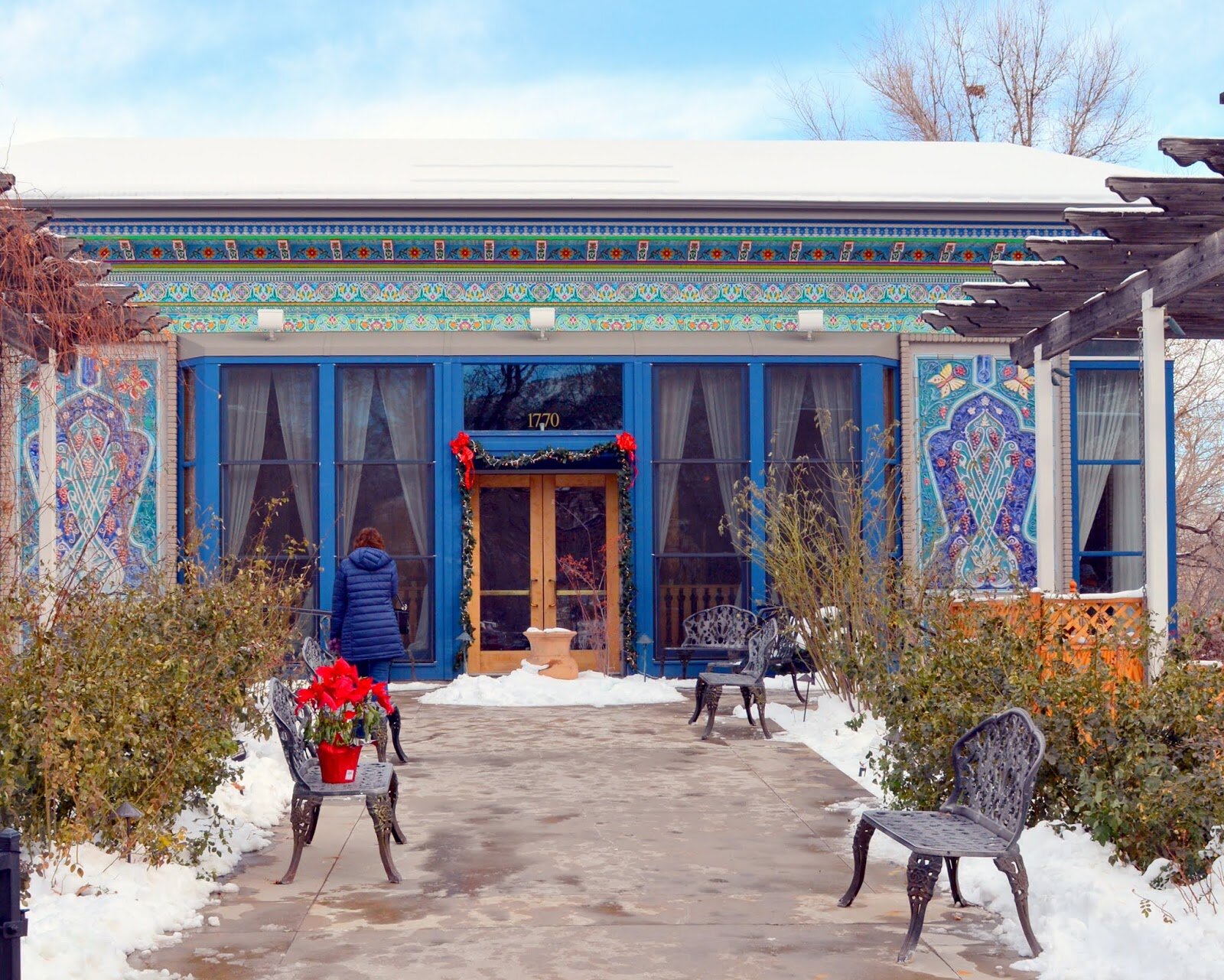SneakyArt of JLF Boulder
You never know what to expect from the weather in Colorado. The locals delight in telling you that. So we were lucky that the weekend forecast was simply sun and shine, without a cloud in the sky.
I was invited to be the official (sneaky) artist at Jaipur Lit Fest’s 5th international edition at Boulder, Colorado. My brief was to walk about the various panel discussions and capture the energy and vibe of the event and the many stimulating conversations. I took with me a trusted fountain pen (TWSBI Eco), and an accordion sketchbook (Hahnemuhle).
The entire event was at the beautiful Boulder Public Library. Like all JLF events, it was free to attend. The opening ceremony at the Dushanbe Tea House. This gorgeous, multi-colored building was brought in bits and pieces from Tajikistan by ship, and assembled on site.
I was introduced to some fascinating people as the ceremonies got underway. Beautiful words were spoken by beautiful people, and beautiful wine was served before a scrumptious dinner. I was truly sorry when I had to pull away from some conversations, so I would remember to keep sketching!
Ideal guest
One who reads the information pamphlet immediately upon receiving it.
There were many guests at the Opening Ceremony, but also many hosts. Dignitaries, patrons of literature from Colorado had got together to organize the literary fest. All guests were accorded a warm welcome by the hosts. Dinner was full of sparkling conversation!
Jovan Mays
Spoken poetry to close the evening…
I spoke to Suraj Dhingra, the Sr. Executive Producer at Teamwork Arts (the guys behind JLF), about how they decide the programming and event scheduling. With 11 literary fests held every year all over the world, this is surely a monumental task! He told me that each event is designed with a certain theme in mind. This theme is determined by the location, its socio-cultural-political atmosphere, and the passions and interests of the diverse Indian diaspora residing there.
In Colorado, for example, the messaging was centered around the voices of communities traditionally suppressed from expressing themselves (Latinx, Native American). In addition, there was representation of Eastern philosophies and world-views which find great favor in this part of the world. There is a vibrant Indian community in Colorado which turned up in great numbers, for whom the weekend had various panels discussing India, and her history & literature.
A happy Sneaky Artist at the end of the evening.
Day 1
Like all JLF events, the morning began with music. The classical music trio of Aditya Kalyanpur (tabla), Pandit Shubhendra Rao (sitar) and Saskia Rao de Haas (cello) mesmerized us with heavenly music.
I was fortunate to connect with them after the performance, and get a picture and signature!
“I normally don’t show my drawings to subjects, but I always make an exception for musicians.”
It is a most clever tactic to follow opening remarks after great music. The audience is entranced, and open to listening contently. I am glad none of the speakers took undue advantage to rhapsodize. Opening words were beautiful and warmly received by the audience.
My first panel of the day was the celebrated author Chitra Banerjee Divakaruni talking about her famous books on Sita and Draupadi. By focusing on the female protagonist’s point-of-view, she brings out a unique perspective that empowers and celebrates the feminine in otherwise patriarchal narratives.
Speaking with writer and Sanskrit-scholar Philip Lutgendorf, she said that she used multiple Ramayana translations from various parts of India to construct Sita’s authentic point of view in “The Forest of Enchantments”.
I didn’t have to move a muscle for the second panel of my choice. Literary historians and translators Linda Hess, Philip Lutgendorf and Purushottam Agarwal were joined by classical musician-singer Shruthi Vishwanath to discuss the genius of Kabir, the 15th century Indian mystic and poet.
The session concluded with a beautiful musical performance by Shruthi, accompanied by enthusiastic Linda Hess translating Kabir’s words to the audience.
Shruthi Vishwanath
with her drawing!
Discussing his book “The Comeback”, John Ralston Saul spoke about the resurgence of indigenous literature, philosophies and knowledge through efforts in the literary field by indigenous peoples. There are a lot of wrongs that need to be made right, and we have only begun the journey on a long road towards a just and fair society, he said.
At events such as these, I am fascinated equally by the luminous speakers and the audiences that come to see them. This is why I moved away from my front row seat before this event, to capture the audience that was listening to the discussion.
After all, what is the value of a discussion if there is nobody to hear it?
To me, the audience are the real heroes.
Day 2
Latinx Voices
Illuminating conversation about the growing need and incredible value of disparate voices in literature.
My second time listening to Sven Beckert talk about his book “Empire of Cotton”. I realized a panel discussion can completely change with a different moderator. The wonderful moderator took the conversation to a completely different place than I expected, and there was a lot to hear and understand about the influence of cotton trade on modern world history.
Watching William Dalrymple was the star event of the fest, and also my star-struck moment. I am a big fan of his writing, and ran promptly downstairs to get a copy of The Anarchy as soon as the talk finished.

























